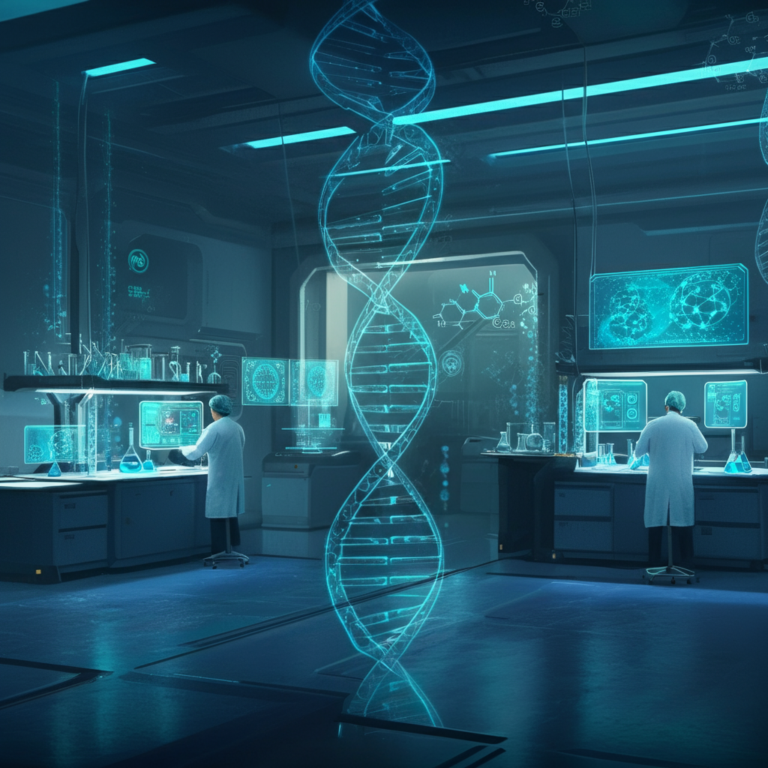Scientific breakthroughs often come in waves, yet few have the potential to reshape humanity like CRISPR and gene editing. A tool once confined to research labs has broken into the mainstream, promising to tackle some of medicine’s most pressing challenges and pave the way for advancements we once thought impossible.
But what exactly is CRISPR, and how is gene editing rewriting the rulebook for medicine and beyond? This blog will explain the basics of CRISPR technology, highlight its major applications, and provide insights into how it could redefine industries, cure diseases, and even alter the human experience.
What is CRISPR and Gene Editing?
CRISPR (short for “Clustered Regularly Interspaced Short Palindromic Repeats”) is a cutting-edge technology that functions like molecular scissors. First discovered in bacteria as a defense mechanism against viruses, CRISPR tools allow researchers to locate specific sections of DNA and edit them with unprecedented precision.
Gene editing builds on this foundation, enabling modifications to genes in living organisms. By either removing, altering, or replacing genetic material, scientists can solve genetic problems at their root. It’s a revolutionary leap from treatments that only manage symptoms to those that could potentially cure diseases altogether.
How Does CRISPR Work?
Think of CRISPR as a GPS system for DNA. Here’s how it works:
- Identify the Target: A guide RNA (gRNA) is programmed to recognize specific DNA sequences.
- Find the Match: CRISPR’s Cas9 protein, an enzyme, reads the DNA until it locates the sequence that matches the guide RNA.
- Cut and Edit: Once it identifies the target, Cas9 snips the DNA. From here, scientists can remove, correct, or rewrite genes.
It’s fast, accurate, and relatively low-cost compared to prior genetic modification methods, quickly becoming a game-changer in scientific research and medicine.
CRISPR’s Potential in Medicine
The medical world has quickly become the playground for CRISPR’s potential. Its applications span numerous fields, offering solutions once thought unimaginable.
1. Curing Genetic Diseases
CRISPR’s ability to edit genes at their source is already showing promise for a range of genetic diseases, including:
- Sickle Cell Anemia and Beta-Thalassemia: Patients treated with CRISPR-edited cells have shown remarkable recoveries.
- Cystic Fibrosis: Scientists are exploring how CRISPR can repair the defective CFTR gene responsible for this disease.
- Muscular Dystrophy: Early experiments suggest that CRISPR could correct mutations linked to this degenerative muscular disease.
2. Fighting Cancer
CRISPR is being used to supercharge immune cells, enabling them to target and destroy cancer more effectively. By editing T-cells, researchers can improve their ability to identify and attack cancer cells, opening the door to new immunotherapy treatments.
3. Combating Infectious Diseases
The technology is also being used to develop treatments and vaccines for diseases like HIV and HPV. Scientists are even exploring CRISPR’s potential to fight the next big epidemic by targeting the genetic codes of viruses.
4. Personalized Medicine
CRISPR provides the ability to tailor treatments to individual patients. By editing genes unique to a person’s condition, gene editing could drastically improve outcomes while minimizing side effects.
CRISPR Beyond Medicine
While the promise of curing diseases rightfully dominates headlines, CRISPR’s applications stretch beyond the healthcare field.
1. Agriculture
Gene editing is transforming agriculture by creating resilient crops that are more nutritious, pest-resistant, and environmentally sustainable. For example:
- Crops like wheat and rice have been edited to thrive in harsher conditions.
- Gene-edited tomatoes are being designed to last longer on store shelves, reducing food waste.
With the global population climbing, these developments may prove crucial in securing the future of food supplies.
2. Environmental Applications
CRISPR could help save endangered species by correcting harmful genetic mutations or increasing their resistance to diseases. Additionally, scientists are exploring its use in controlling invasive species and reversing the damage caused by environmental degradation.
3. Industrial Biotechnology
From improving biofuels to designing enzymes for clean energy production, CRISPR is reshaping industrial biotechnology. It even has the potential to improve the efficiency of alcohol and pharmaceutical production.
4. Designer Organisms
While controversial, CRISPR enables the possibility of creating “designer organisms” that serve specific ecological or industrial needs, such as bacteria that digest plastic waste.
Risks and Ethical Concerns
Of course, as with any groundbreaking technology, CRISPR raises important ethical and safety issues. Questions include:
- Where Do We Draw the Line? Should we be editing traits like intelligence, physical appearance, or athletic ability?
- Unintended Consequences: Could edits in one gene create unforeseen problems in another?
- Accessibility: Who gets to benefit? Affordability remains a hurdle for wider adoption, raising concerns over equity.
Striking a balance between innovation and responsibility will require global collaboration and regulation.
What’s Next for CRISPR?
The CRISPR timeline is accelerating, with new advancements shaping our understanding of what’s possible. The development of CRISPR 2.0 tools expands its precision and reduces off-target errors, making the technology safer and more effective.
Additional emerging applications include:
- Growing organs for transplantation using gene-edited pigs.
- Eradicating genetic-based blindness with single-treatment solutions.
- Editing the microbiome to improve digestive health.
With venture capital pouring into CRISPR-based startups, the next decade will undoubtedly see even more breakthroughs.
Shaping the Future with CRISPR
CRISPR and gene editing represent a once-in-a-generation leap in science and technology, reshaping how we approach not just medicine, but the many challenges humanity faces. While the full extent of its potential is yet to unfold, one thing is clear—CRISPR holds the power to not only improve lives but to redefine the way we think about genetics, disease, and the future of humanity.
Interested in staying up to date with CRISPR technology and its applications? Subscribe to our newsletter for the latest insights and breakthroughs.





















0 Comments